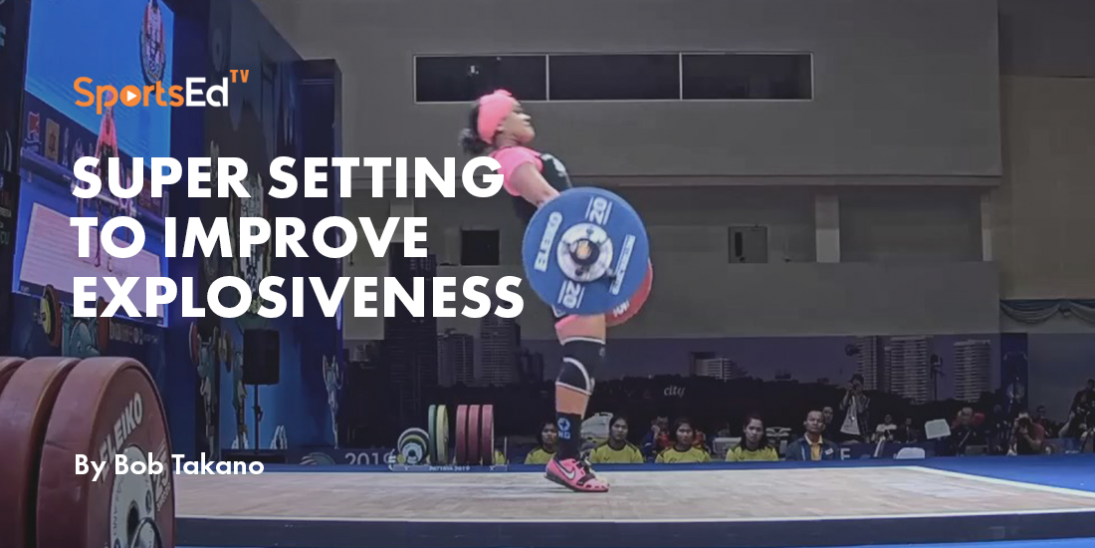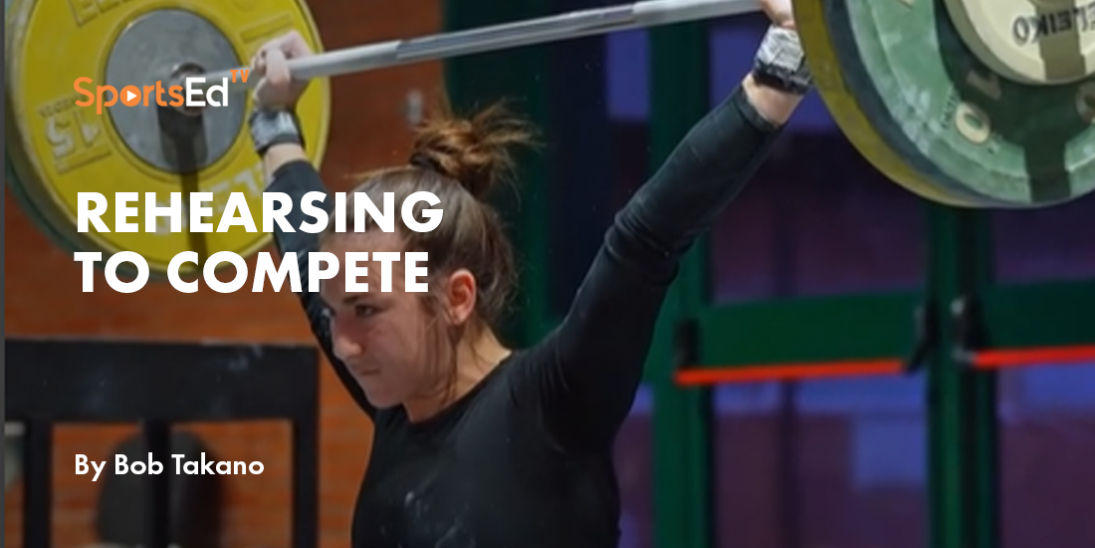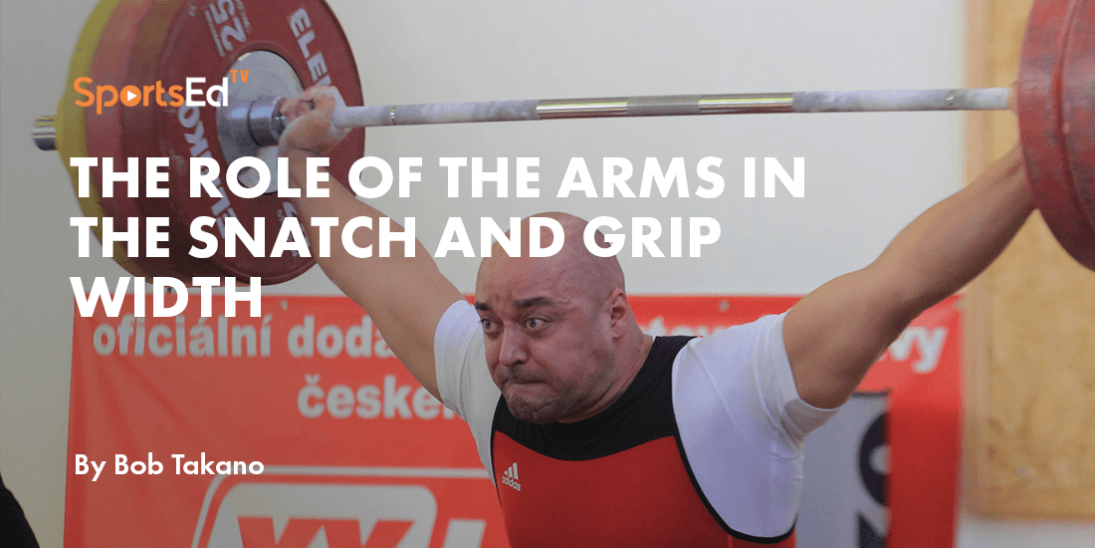Weightlifting
Welcome and thanks for visiting...

Navigating Intensity Zones in Weightlifting Training
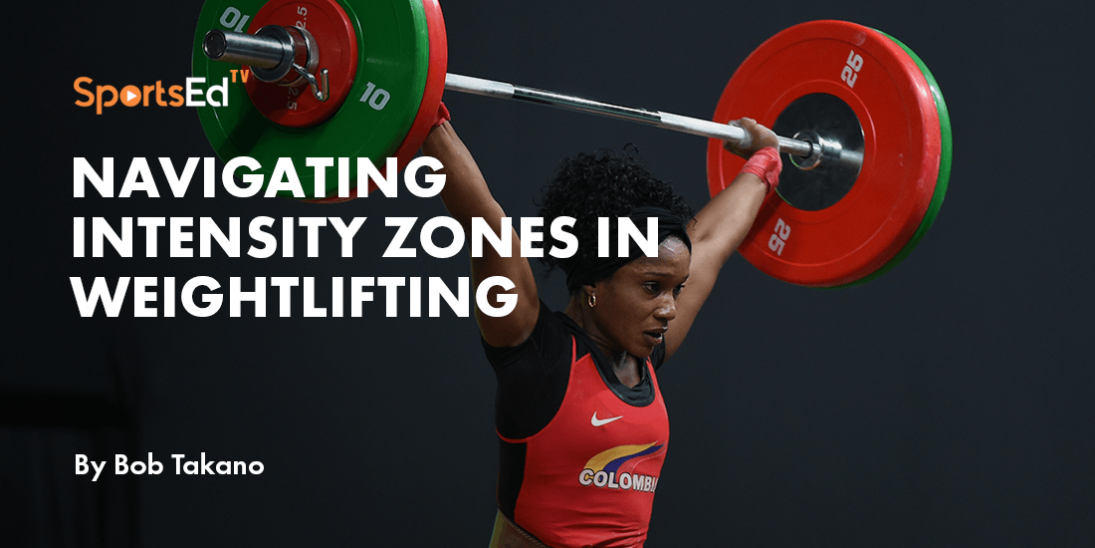
In weightlifting programming, vernacular intensity refers to the amount of weight employed during each repetition of training. When beginners first begin training, they often have difficulty determining the appropriate intensities to be used. At one end of the spectrum are those who realize they must initially train with lighter weights to learn and improve their technique. Some individuals become hesitant to increase the weights because it might lead to technical errors. At the other end of the spectrum are those who realize the sport is all about lifting the heaviest weight possible, and they become consumed with always increasing the weight.
Let’s examine how intensities should be distributed over the various intensity zones to refine technique, improve speed, and become more powerful.
50% intensities
It can improve bar speed but is not helpful for athletes who are beyond the very beginning designation.
60% intensities
Can greatly improve bar speed if small volumes of power snatches, power cleans, power jerks, push presses, snatches, cleans, jerks, and squats are programmed in this zone.
70% intensities
Can improve bar speed and somewhat improve strength. The same movements as in the 60% zone should be programmed in this zone.
80% intensities
Will yield the most optimal increases in both speed and strength. Small volumes of power snatches, power cleans, power jerks, and push presses should be programmed in this zone. The largest volumes of snatches, cleans, jerks, and squats are programmed here. A lesser volume of pulls, extensions, and deadlifts may be programmed at 80%.
90% intensities
Will yield a great improvement in strength but less in bar speed. A smaller volume of snatches, cleans, jerks, and squats will be programmed in this zone. A greater volume of pulls, extensions, and deadlifts are programmed in this zone.
100% intensities and higher
Will yield the greatest increase in strength but very little as far as bar speed is concerned. Pulls, extensions, and deadlifts are programmable in this zone but in a lesser volume.
What is the Average Relative Intensity (ARI)
The Average Relative Intensity (ARI) is important to consider here. The relative intensity is expressed in percentages. If a training sequence for one exercise is:
60%/3, 70%/3, (80%/3)3. The sum can be calculated as 60%/3, (180%), 70%/3 (210%),
(80%/3)3 (720%) or 1110%, which can yield an average relative intensity of 1110%/15 or 74%.
With the ARI understood, the following table should provide guidance in programming training to yield the greatest gains in both speed and strength.
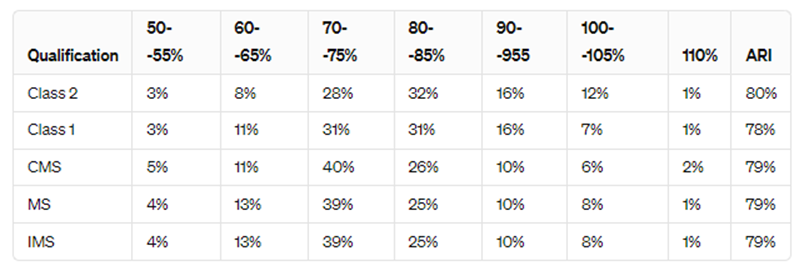
Here are the classification tables for the bodyweight classes.
Women’s Classes
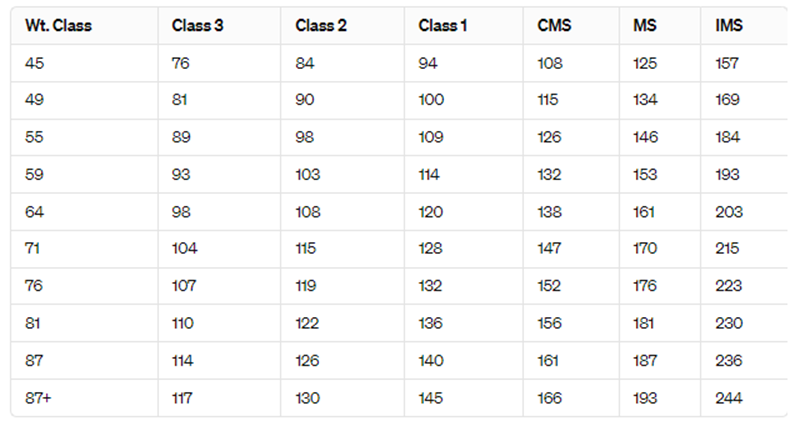
Men’s Classes
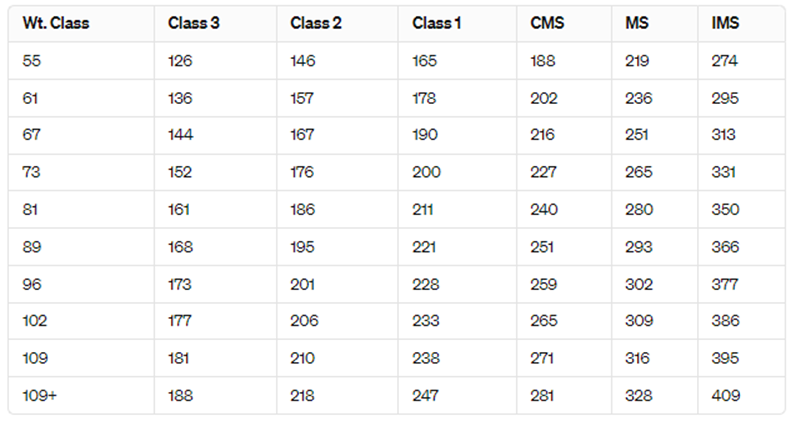
Use these tables to determine your ARI, and from there, you can start planning your details.



